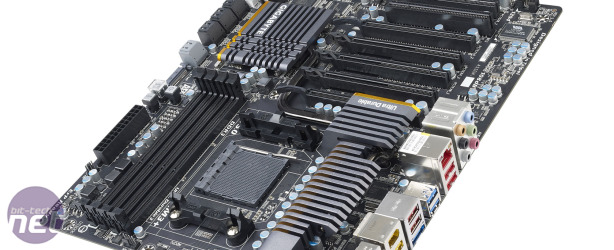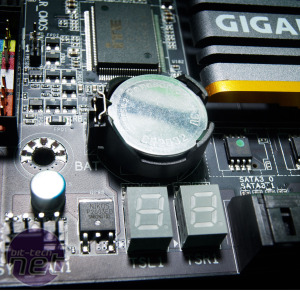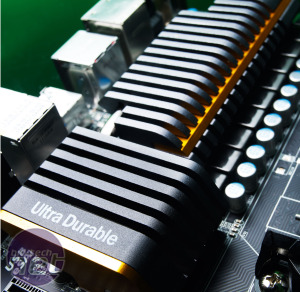Performance Analysis
As the UD7 is the first AM3+ motherboard we’ve tested, we needed to test some additional boards to provide some context for the figures we obtained. To this end, we also put the £140 ASRock 890FX Deluxe 5 and the £158 MSI 990FXA-GD80 through our battery of tests so we could see how the UD7 compared to its competition.At stock speeds, the UD7 proved to be quite inconsistent. It recorded the highest scores in the Gimp image editing test and the HandBrake H.264 video encoding test by a considerable margin. However, its score of 973 in the multi-tasking test was very poor. Even then, the UD7 managed a reasonable overall score of 1,392, which put it at the top of the table of boards we've tested.
The UD7 also performed disappointingly in Arma II, with a minimum frame rate of 58fps – 3fps lower than that of the GD80. SATA performance, on the other hand, was merely average – it managed a read speed of 372MB/sec, with the write speed slightly higher at 400MB/sec via the SB950 Southbridge. The Marvell 88SE9172 controller fared poorly, however, only managing read and write speeds of 276MB/sec and 201MB/sec respectively.
Once all our tests at stock speeds were complete, we turned our attention to overclocking the board. The UD7 isn’t equipped with an EFI, however, so we headed into the traditional BIOS to perform our tweaking. While it didn’t have the pizzazz of some of the P67 EFI systems we’ve seen, at least the UD7’s BIOS was lag-free and well laid out.
Sadly, we were only able to push the HTT speed to 320MHz at most, which required an HT link voltage of 1.325V, an NB voltage of 1.3V and a CPU NB VID of 1.35V – strangely, there was no Southbridge voltage option. We couldn’t use this maximum HTT when we raised the CPU multiplier either; an indication that the UD7 isn’t great at handling very heavy overclocks.
We finally settled on a compromise with a 305MHz HTT using a CPU multiplier of 13x - giving us a CPU frequency of 3.95GHz. Despite our best efforts, the UD7 didn’t want to play ball with the CPU clocked above 4GHz, which is disappointing, as the GD80 pushed the CPU to 4.2GHz. The UD7 wasn’t able to recover from most failed overclocks either.
Not surprisingly, the low HTT and CPU frequency resulted in the lowest overclocked Media Benchmarks scores, although its overall score of 1,556 was only 63 points short of that of the Deluxe 5, which came out on top. The UD7 was unable to shake off its poor Arma II performance, though, and could only muster a minimum frame rate of 64fps. This is an increase of 6fps, but it was barely better than the MSI’s result at stock speed.
Conclusion
The UD7 is a monster in some ways and a weakling in others. It has a packed PCB, which sports useful features such as power and reset switches, and it’s also able to cater for the craziest of SLI or CrossFireX setups. While it uses a BIOS rather than an EFI, it was also more pleasant to overclock than the ASRock 890FX Deluxe5 or the MSI 990FXA-GD80.However, it isn’t a great overclocker, and the other boards we tested managed a higher maximum HTT and CPU frequency while costing less. If you must have a 4-way graphics card setup, the 990FXA-UD7 is the only AM3+ option we’ve seen to date; otherwise we advise holding your horses and waiting for the other AM3+ motherboard reviews we have coming up.
-
Value16 / 25
-
Features26 / 30
-
Speed36 / 45


MSI MPG Velox 100R Chassis Review
October 14 2021 | 15:04












Want to comment? Please log in.